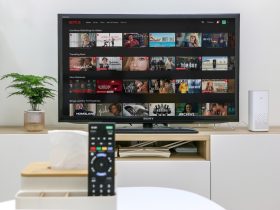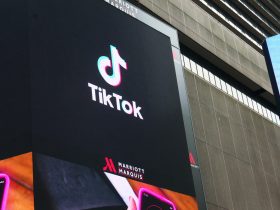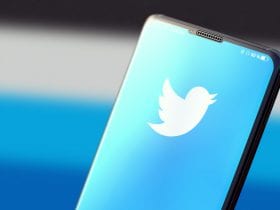Digital marketing’s main USPs, other than the fact we spend so much time online these days that it’s obligatory to advertise there, is that it’s so data-focused and trackable. Unlike outdoors advertising or TV, radio or print ads, advertisers know the precise customer journey online from first contact to conversion or otherwise. And if the potential customer doesn’t turn into a customer, the advertiser can see at exactly what part of the funnel they drop out of the running. It’s a science and what works, what doesn’t and under what circumstances can be distilled into excel sheets and attractively visualised in dashboards. Digital is a marketer’s and advertiser’s dream.
Or most of what digital marketing consists of is. Influencer marketing is currently the ‘en vogue’ channel of choice for brands to speak and relate to their target audience at scale and with authenticity. Influencer marketing can be summed up as using mainstream and social media celebrities with high numbers of followers to endorse brands via social media posts. With 53% of women reportedly making purchases due to influencer posts it is understandable why brands are so keen. However, there are other statistics which muddy the waters and raise the legitimate question ‘why are brands so keen’?
A recent article in Marketing Week claimed that 38% of marketers say they cannot tell if influencer activities their companies have commissioned actually drive sales. 86% said they were unsure how influencers calculate their fees. That’s a lot of ambiguity for a sub-category of digital marketing Linqia’s ‘The State of Influencer Marketing 2017’ report says has been employed by 86% of marketers, 94% of whom ‘found it effective’. The content marketing technology company’s report also shows that almost 50% of marketers are definitely planning an increase of the portion of budget allocated to influencer campaigns.

Source: Linqia – The State of Influencer Marketing 2017
There are many analytics-focused marketers and industry observers who believe that influencer marketing is a fad brands and agencies are throwing money at with little in the way of concrete evidence to suggest if it is being well spent or not. This is a suspicion supported by an investigation set up by Mediakix, an influencer marketing agency. The agency created fake Instagram accounts using generic stock photography images and bought users for $3-$8 per 1000. Four brands subsequently approached the bogus influencers and offered them free products, money or both for posts endorsing their products.
A clever move by Mediakix, warning brands not to try and do influencer marketing themselves and to leave it to the experts. It also highlighted just how much money is probably wasted on ‘influencer’ marketing. And plenty of money is being spent:

Source: Linqia – The State of Influencer Marketing 2017
An eMarketer survey showed that $570 million was spent globally on influencer marketing via Instagram alone. With as many marketers saying Facebook is as important to their influencer marketing strategy and other channels also regularly used, this would suggest that total spend most likely topped $2 billion.

Lyqia’s report also found that 78% of marketers who had used influencers for campaigns said their greatest challenge was determining ROI. It’s a paradox summed up by Benefit’s head of digital marketing Michelle Stoodley, who has said:
“It’s probably the only thing in digital marketing that exploded before there’s been any real benchmark for success. It kind of goes against a lot of what digital marketing is normally about, which is numbers, data and tracking.”
Influencer Marketing Does Work
Despite all of the ambiguity, there is plenty of evidence to suggest that influencer marketing does genuinely work. The perfect ‘statistically objective’ way to genuinely prove ROI from influencer marketing would of course be brands that haven’t used any other kind of marketing, ever. And there are such examples. Daniel Wellington, a mid-priced Swedish watch brand founded as a start-up in 2011 has exclusively used influencer marketing to promote their brand. Within three years the company had sold a million watches and seen revenue increase 214% between 2014 and 2015, up to $220 million.
The tricky part is isolating and measuring ROI for brands that use influencer marketing as part of a marketing mix rather than as a stand-alone strategy. And that’s a category that covers the vast majority of brands that have allocated budget to influencer marketing. The first question a brand should ask themselves is how do they want to classify ROI? Is it actual sales directly resulting from influencer campaigns – performance marketing, or is it brand awareness – brand marketing?
Here are some of the main measurables that statistics on ROI can be judged on:
Audience Reach – this is a less tangible measurable than the others on this list as audience reach is not necessarily audience engagement. However, there is some value in assessing the number of followers an influencer has and estimating from that how many have been exposed to a post endorsing the brand. Audience reach is a more important measurable for very targeted industries where followers of the influencer are interested in that industry, such as for B2B brands.
Audience reach will also be the primary consideration in the case of a high budget influencer campaign where the influencer is a more high-profile individual.
Impressions – a more quantifiable metric than audience reach, impressions on posts by influencers featuring a brand show how much of an influencer’s audience has actually seen a post rather than how many could potentially see it. Marketers can then compare the number of impressions an influencer’s post has generated in comparison to posts made via the brand’s own social media channels.
Engagement – this is again another level up in terms of measuring real impact of an influencer campaign. Of course, the whole point in getting eyeballs on a brand and its products/service through an influencer is based on the premise that this channel generates higher levels of engagement than others. There’s little gained for a brand if an audience sees a influencer’s post but takes little notice of it.
Engagement is generally measured by likes, comments and shares. Shares are the most powerful indication of engagement with an influencer post, as well as boosting its reach, followed by comments and then likes, which many followers give be default, not necessarily having paid a great deal of attention. Also, influencers who regularly engage with their own audience rather than just broadcasting will in most cases provide better ROI than those who perhaps have a bigger following but rarely interact with it.
Conversion – finally, the most quantifiable metric that influencer marketing can be judged upon is conversion. A conversion can mean different things for different brands and campaigns. While a sale is of course the highest level of conversion, there are different points along the sales funnel that can also be considered as the conversion metric a campaign is judged on. These might include:
Growth in brand followers if new followers can be tracked to a particular influencer campaign.
Traffic to a website or landing page where the click-through comes from a link in the influencer’s post or figures can also be extrapolated by calculating the difference in traffic averages before and in the period after a post.
Signups to a newsletter or other form like a downloadable piece of content that captures an email or other personal information.
The final two conversion metrics can subsequently be tracked to the point of a sale in the same way as any other form of digital marketing as the individuals are within the brand’s sales funnel.
Conclusion – Establish Goals and Metrics and ROI is Clear
ROI on influencer marketing can be accurately and objectively calculated as long as the brand and marketer clearly set their goals going into a campaign. No professional marketer sets up a paid search or other kind of digital marketing campaign without first establishing how ROI will be judged and putting the relevant tracking in place to do so.
If the same approach is taken with influencer campaigns and money is not simply allocated without proper thought and preparation because it’s what everyone else is doing, putting an objective ROI figure at the end of the campaign is more than achievable.










Leave a Reply